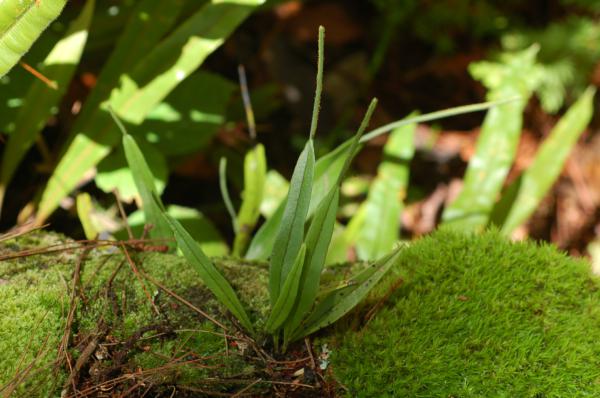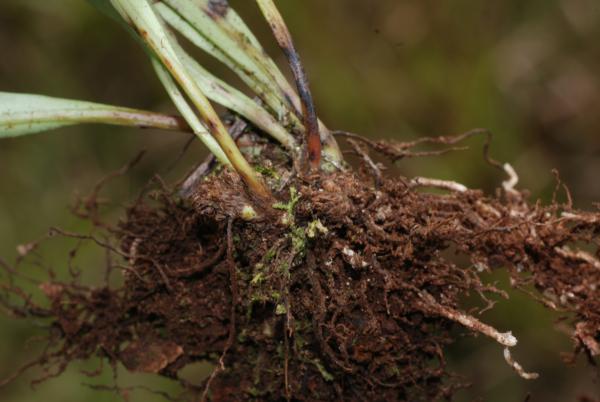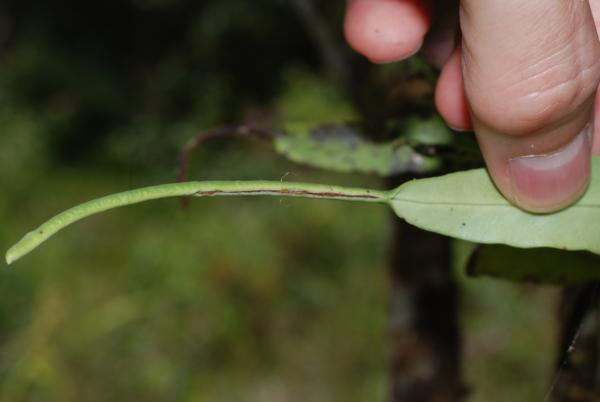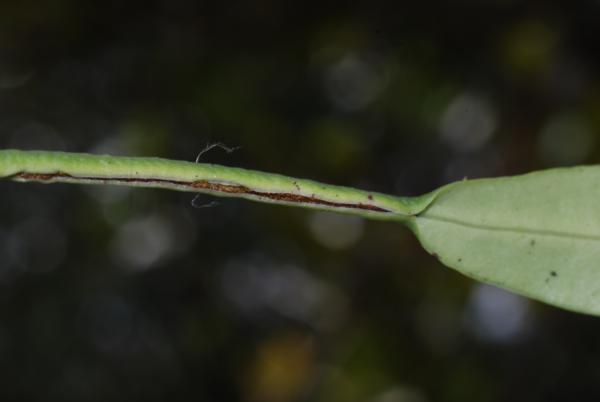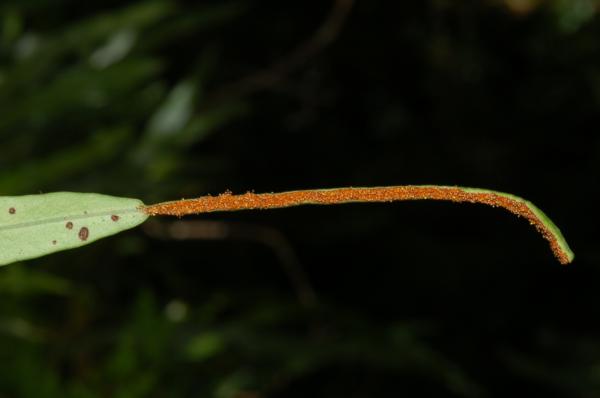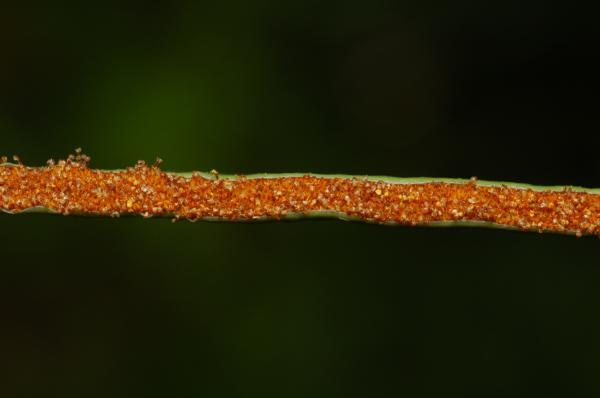
Belvisia spicata (L.f.) Mirbel ex Copel.
Family
Polypodiaceae
Nomenclature
Belvisia spicata (L.f.) Mirbel ex Copel., Gen. Fil.: 192. 1947; Hovenkamp & Franken, Fl. Males., Ser. II, Ferns and Fern Allies 3: 31. 1998; Boonkerd et al., Thai For. Bull. (Bot.) 32: 9. 2004; Boonkerd & Pollwatn, Nat. Hist. J. Chulalongkorn Univ. 6: 22. 2006. – Acrostichum spicatum L.f., Suppl. Pl.: 444. 1781. – Schizaea spicata (L.f.) Sm., Mém. Acad. Sci. Turin 5: 43. 1793. – Onoclea spicata (L.f.) Sw., J. Bot. (Schrader) 1800(2): 299. 1801.– Gymnopteris spicata (L.f.) C.Presl, Tent. 244, t. 11, f. 7. 1836; Bedd., Handb. Ferns Brit. India: 432, f. 261. 1883. – Hymenolepis spicata (L.f.) C.Presl, Epimel. Bot.: 159. 1851 [‘1849’]. – Taenitis spicata (L.f.) Mett. in Miq., Ann. Mus. Not. Lugd.-Bat. 4: 173. 1869. – Macroplethus spicata (L.f.) Tagawa, Acta Phytotax. Geobot. 11: 235. 1942. – Lepisorus spicatus (L.f.) Li Wang, Bot. J. Linn. Soc. 162(1): 35. 2010. – Type: Mauritius, Commerson s.n. (P).
Belvisia revoluta (Blume) Copel., Gen. Fil.: 192. 1947; Holttum, Rev. Fl. Malaya ed. 1, 2: 155, f. 67. 1955 [‘1954’]; Holttum, Dansk Bot. Ark. 20: 19. 1961; Tagawa & K.Iwats., SouthE. Asian Stud. 5: 50. 1967; Tagawa & K.Iwats., Fl. Thailand 3: 521. 1989; Boonkerd & Pollawatn, Pterid. Thailand: 245, 246, 264. 2000. – Hymenolepis revoluta Blume, Enum. Pl. Javae: 201. 1828; Tardieu & C.Chr., Fl. Indo-Chine 7(2): 452. 1941.
Description
Epiphytic. Rhizome short creeping, 2–5 mm diam., bearing many closely spaced fronds, densely scaly; scales oblong-subtriangular, gradually narrowing from base towards apex, round at base, attenuate at apex, entire, about 1.7–3(–4.1) by 1–1.5 mm, the central portion dark with thick internal walls; the marginal portion consisting of smaller cells with thinner internal walls, thus paler in colour. Stipes 0.5–5 cm long, not distinct from the midribs of laminae, narrowly winged on the upper portion, stramineous to pale castaneous, scaly at base. Laminae linear-lanceolate, usually broadest at middle portion, attenuate towards both ends, (8–)15–25(–30) cm long in sterile portion, (0.3–)1–2.5 cm broad, the margin more or less revolute; softly chartaceous; veins hardly visible, copiously anastomosing; fertile portion linear, with distinct constriction at base, up to 15 by 0.3 cm broad, covered wholly with sporangia except on the midribs and margin .
Distribution in Thailand
NORTHERN: Tak; NORTH-EASTERN: Loei; EASTERN: Nakhon Ratchasima; SOUTH-WESTERN: Kanchanaburi; CENTRAL: Nakhon Nayok; PENINSULAR: Surat Thani, Nakhon Si Thammarat, Trang, Yala.
Wider Distribution
Tropics of Asia, from Sri Lanka to Tahiti.
Ecology
On tree trunks in forests at medium to high altitudes.
Proposed IUCN Conservation Assessment
Least Concern (LC). This species is widespread and not under any known threats.
Voucher specimens - Thailand
Middleton et al. 5650, Nakhon Nayok, Khao Yai National Park, summit of Khao Kieo (E).
Habit
Rhizome
Young fertile section
Young fertile section
Frond apex with mature sori
Sori
Site hosted by the Royal Botanic Garden Edinburgh. Content managed by Stuart Lindsay, Gardens by the Bay, Singapore and David Middleton, Singapore Botanic Gardens. Last updated 24 January 2012
